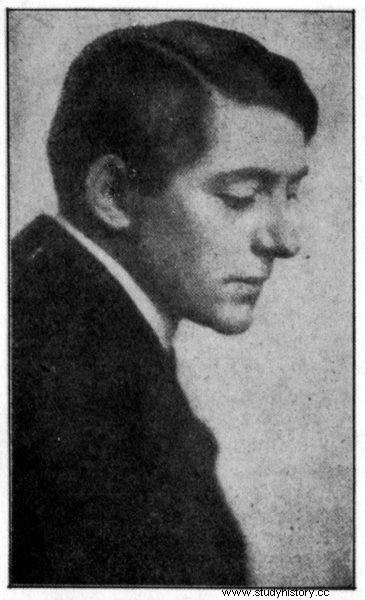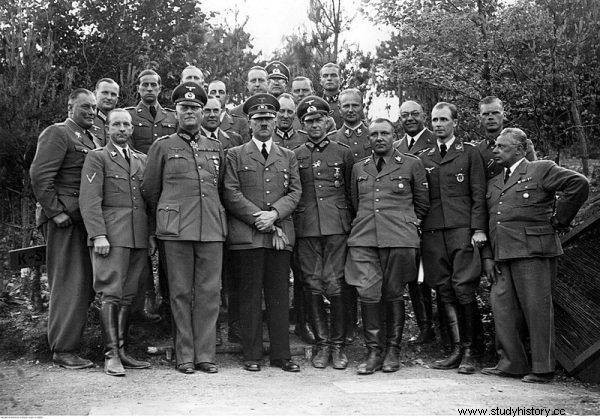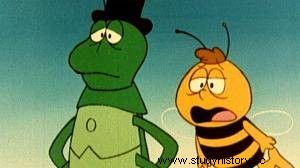"Dear God, perform a miracle and help me and my people get out of our misery" - these words worthy of a national hero were uttered by no Winkelried. Moreover, they did not even fall from the mouth of a man. It was spoken by ... a bee that everyone knows and loves. Despite its Nazi roots.
In the 1980s, Maja reigned on Polish screens. Who then did not know the adventures of a resolute bee and her merry friends. Her image was so closely connected with our reality that many could not believe that it is not a native fairy tale.
Some have muttered about her Japanese origins. Those who say that Maja is an idea of the Hungarians or - horrible! - Germans, they were deprived of their reverence and faith. The reality, however, turned out to be even stranger. The nice insect was actually drawn by samurai descendants, but it flew to the Far East and then to the Vistula River from across the Oder. And not from the friendly GDR, but directly from the "spoiled", capitalist Germany. To make matters worse, Maja was… a Nazi.
Brown entomologist
If you bury our striped heroine in the past, it turns out that originally she was far from being good-natured and tolerant. But she was more like a typical villain and racist with a sense of mission. And no wonder, considering the person of its creator.
A book about the adventures of the bee was published in 1912 by a German teacher with an exceptional flair for raising children, writer and traveler Waldemar Bonsels. He also dabbled in journalism and worked as a front correspondent during the Great War. In the 1920s, he was one of the most widely read authors in Germany, and each of his books was a market success.
Perhaps these successes would not have happened had it not been for his true passion - traveling. Bonsels has visited all of Europe and a large part of Asia. He described his travels around America and India in travel reports. By the way, he closely watched the British Empire - the then global gendarme. He saw such qualities in the British as bravado, curiosity about the world combined with a little undiscipline, and passionate patriotism. His dream was to transfer these qualities to his native soil so as not to destroy what he considered to be the quintessence of the German spirit - nationalism and militarism.

Waldemar Bonsels
The traumatic experiences of World War I and the appearance of the Nazi party on the political arena radicalized his views, although he did not immediately join the group of supporters of the new regime. It even got to the point where he kicked out SA militants from one of his lectures. The Nazis did not forget this affront, and as soon as they came to power in 1933, they included most of his works on the list of forbidden books, looking for, among others, too saturated with eroticism (!).
The sight of the books burning on the pile made Bonsels an ardent supporter of the actions of the new chancellor. This was confirmed, inter alia, by in the same year publishing an essay "NSDAP und Judentum" ("The Nazi Party and Jewry"), in which he emphasized his anti-Semitism, calling the Jews "a deadly enemy." As if that were not enough, he soon wrote a novel in which he proved the Galilean and not the Jewish origin of Christ ("Der Grieche Dositos"). He considered her to be the most important in his achievements. The most important, but - as it turned out - by no means the most popular.
World voyages, so adored by Bonsels, brought into his life one more great passion - nature observation. He was particularly fascinated by the world of insects, where he saw role models for humans. He probably did not expect his entomological aspirations to bear fruit in a work that would be approved by the Führer himself.
The bee that did not burn
The writer presented his natural ideas for a perfect society in a 200-page didactic tale for children. Its heroine - Maja the bee - is a rebel who does not want to live according to the eternal arrangements in the hive. She dislikes bee rules, the absolute rule of the queen, and the role of the drones. In search of a life path, he leaves the hive and tries to conquer the world on his own. Ultimately, however, he returns from voluntary exile, warns the queen against the hornet attack, and thus redeems his guilt - striving to live outside the community, which only does more harm than good.
It might seem that there is nothing wrong with this story. However, when you delve into the text, you can find messages in it that today we would not necessarily consider appropriate for the youngest. The cult of violence and Bonsels' cherished militarism are omnipresent here. At the very beginning, Maja learns that "bees have great respect in the world because they have courage and stings". Taking advantage of this clue, he did not hesitate to threaten with his weapon, summoning a certain fly that had the audacity to call it "a fool." The world of insects is also divided into better ones and those definitely lower in the hierarchy.

The author of "Maya's Bee" wrote a novel in which he proved Christ's Galilean, not Jewish, origin ("Der Grieche Dositos").
Here is the comment of the grasshopper Philip about the lack of difference between the wasps and the sweating bees Maya explodes:"Wasps are a bunch of useless gallows deprived of their homeland and faith" - so it is only a step away from inciting extermination.
The booklet also includes chilling descriptions of torn wings, legs, broken jaws and knocked out eyes. And the battle with hornets is a real slaughter with a corpse littering densely where no prisoners are taken. Anyway, in this case, the bees obey the orders of the queen, who in a peculiar "Huna speech" - modeled on the words of Emperor Wilhelm II saying goodbye to German soldiers setting off to suppress the boxer uprising in 1900 - calls on her subjects to treat the enemy mercilessly.
In the face of such messages and hidden metaphors, even Hitler himself could not remain unmoved. Seeing their usefulness in shaping the man of the new times, he did not send Maja's bee to the stake. This fate was not shared by only one Bonsels work - "Journey to India" (for unknown reasons).
Bestseller goes to theaters
"Maja the Bee and her adventures" and "Sky nation" - the continuation of the adventures of the striped heroine - immediately became a hit on the market. Sales were in millions of copies worldwide. In Poland, Maja was released for the first time a decade after its German premiere. In the years 1915–1940, the bee was at the top of the bestseller lists in Germany. No wonder that it has become a tasty morsel for the cinema, which was becoming more and more popular after the Great War.
The story was first filmed at the turn of 1924–1925. It was taken care of by Wolfram Junghans - a director and biologist by education, with the support of Bonsels himself. Work on the painting was tedious, but the effects were extremely realistic, because the roles of insects were ... living insects. The silent film, supported by boards describing the action on the screen, made its debut at the Dresden Capitol cinema and immediately became a hit of the season.
See also:Prison, battery, harassment. How the Germans treated the leading Polish Germanophile
New times - new hero
After 1945, the Nazi atrocities of World War II made the Bonsels bestseller quiet. Sometimes there were re-releases and even musical adaptations, but as a rule Maja was considered "a bee with a swastika on its wings" . Many more years had to pass before it was possible to return to its history. In the mid-1970s, the German TV station ZDF proposed a series about the adventures of a feisty bee. Of course, its adventures were cleared of any incorrect content.

The character of Gucio was added to the 1975 series.
Humorous accents were added, the characters of the greedy slacker Gucio the drone and the clever mouse Alexander were added, and the grasshopper Filip lived to see the role of the novel's narrator and a kind of mentor of the main character. The changes required negotiation with the widow of Bonsels, who was reluctant to make any changes. Ultimately, however, she gave in, and Maja, having received a typically Japanese style of anime films (produced by the company from the Land of the Rising Sun Zuiyo Enterprise), set off to conquer the world - this time with success.
Bibliography:
- Bonsels W., Die Biene Maja und ihre Abenteuer , München 2007.
- Bonsels W., Maja the bee and her adventures , crowd. M. Kreczowska, Katowice 1989.
- Dżon B., Maja the bee is 100 years old , "Tygodnik Przegląd" [access:15/10/2020].
